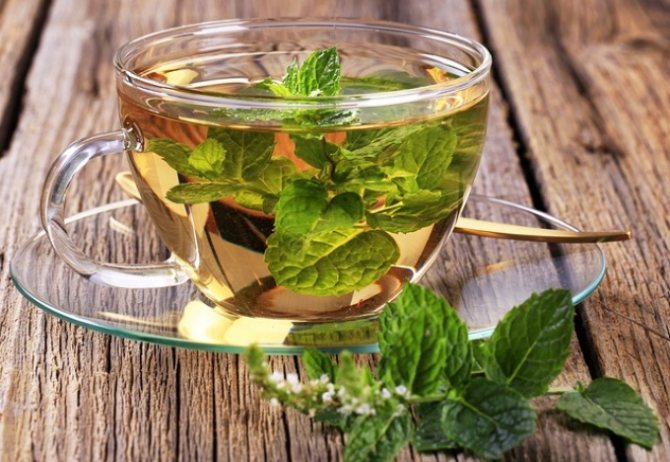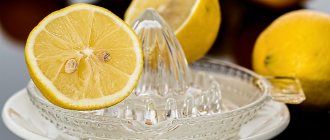Beneficial properties of chamomile
Modest flowers are a valuable medicine with a wide range of indications. Ancient doctors treated gynecological diseases with the help of “uterine grass” and prepared a potion against snake bites. Nowadays, pharmaceutical chamomile is used in medicine for preventive and therapeutic purposes. It is also used in cosmetology.
Valuable substances are concentrated in the flower basket. They contain chemical compounds:
- flavonoids – luteolin, apigenin;
- tannins, protein substances;
- organic acids – isovaleric, salicylic, caprylic;
- carotenes, coumarins;
- vitamins – nicotinic, ascorbic acid;
- polysaccharides;
- microelements - copper, potassium, selenium, zinc;
- essential oil, which contains chamazulene, has anti-inflammatory, bactericidal properties, accelerates tissue regeneration.
Important! Unlike pharmaceutical chamomile, its fragrant relative, growing along the roadsides, does not contain chamazulene.
Teas, infusions, extracts, and decoctions prepared from medicinal flowers have a wide range of medicinal effects:
- mild antiseptic;
- antispasmodic and analgesic;
- anti-inflammatory;
- hemostatic;
- choleretic;
- antihistamine;
- vasodilator.
Chamomile infusions reduce gas formation, stimulate digestion, and calm the nervous system. The herb stops uterine bleeding and regulates the menstrual cycle.
Mint, benefits and harm
Many people like the smell and taste of mint; some add it to food, others add it to drinks, and others use it to decorate dishes. But few people think that its use can bring both benefit and harm. In this regard, you need to find out what benefits the use of mint can bring, and what contraindications there are to its use.
The healing properties of mint
The therapeutic effect of using mint-based preparations is recognized by official medicine. It is an integral part of many medicines, such as validol, and is also added to many herbal preparations. Mint has the following beneficial properties:
- improves blood circulation,
- treats stomach diseases,
- has a positive effect on the respiratory system,
- normalizes digestive processes,
- reduces heart palpitations.
Contraindications
In order not to harm yourself by using seemingly harmless mint, you need to know the contraindications to its use. They are:
- consuming mint products in large quantities leads to a decrease in blood pressure, so hypotensive patients need to regulate the intake of these drugs;
- the use of mint reduces vascular tone, so it is better to avoid it if you have varicose veins;
- mint causes a decrease in milk production in nursing mothers;
- the use of mint internally has an inhibitory effect on the body, so you should not take it during work that requires concentration, but the use of mint as a flavoring has the opposite effect;
- there is an opinion that eating mint leads to a decrease in libido in men;
- menthol, which is part of mint, has a depressing effect on the respiratory system in children.
Scope of application
Chamomile flowers are used in various fields of medicine:
- the property of relieving smooth muscle spasms is used for gastritis, enterocolitis, cholecystitis;
- for respiratory infections, chamomile is useful as an anti-inflammatory agent;
- calms during psycho-emotional tension, stress;
- relieves headaches in weather-sensitive people when the weather changes;
- reduces pain in the lower abdomen during the monthly cycle;
- strengthens the immune system thanks to vitamin C.
Chamomile tea is used to treat the oral cavity for stomatitis, gingivitis, and sore throat. Dentists recommend rinsing after tooth extraction or implantation. Ophthalmologists use it as an eye wash and lotion.
Cosmetologists use it as an external remedy for acne and pustules in the form of rubbing. Chamomile tea lotions help with non-healing wounds, eczema, and burns.
For hemorrhoids in adults, chamomile infusion is used in the form of compresses. Women do sitz baths for inflammation of the uterine appendages.
Mint tea during breastfeeding - features of use
We would like to say right away that it is not recommended to drink mint tea while breastfeeding. We all know that mint contains a huge amount of menthol essential oil. As you know, menthol affects the production of mucous secretions in the body. When menthol accumulates in the body, their production is noticeably reduced, sometimes to critical levels. One of the side effects in this case will be a sharp reduction in breast milk.
If you continue to saturate your body with metol, lactation may stop altogether. But still, this does not mean that mint tea cannot be consumed throughout the breastfeeding period. So, if you have reached the stage of weaning your baby from the breast, then mint will be very much allowed in this case. You can drink mint tea every other day, 200 ml at a time, and after a while the production of breast milk will stop, and you will not have to take any additional measures.
Chamomile for food poisoning
Herbal medicine is used only in mild cases of food poisoning, when the temperature is not elevated and dehydration does not develop due to vomiting and diarrhea.
The plant is known for its anti-inflammatory and sorbing properties. Chamomile for food poisoning is used only from the second day of the disease. In the first hours, in case of nausea and vomiting, gastric lavage is done. It is recommended to drink plenty of fluids, take Regidron, Smecta.
Decoctions, infusions, and chamomile tea have a healing effect:
- relieve spasms of the stomach and intestines, eliminate flatulence;
- reduce inflammation of the digestive system, prevent the development of gastritis;
- improve the flow of bile, stimulate the production of enzymes by the liver;
- remove manifestations of intoxication - vomiting, diarrhea.
Chamomile adsorbs waste products of bacteria - the cause of intoxication.
During this period, it is not recommended to do an enema with chamomile infusion. It is better to rinse the intestines with water with the addition of baking soda.
For poisoning, chamomile is prepared as an infusion:
- Add 1 tbsp to a glass of boiling water. l. colors.
- Place the container in a small deep saucepan of water (i.e. in a water bath).
- Leave for 15 minutes on medium heat.
After filtering, take 50 ml solution three times a day. Brewed chamomile relieves signs of food poisoning in 2-3 days.
Chamomile for nausea and stomach pain
The main symptoms of nausea are: a feeling of restlessness along with the desire to vomit. Nausea may be accompanied by symptoms such as abdominal pain, anxiety, sweating, dizziness, weakness, and vomiting.
The feeling of nausea may seem to originate from the stomach, but it actually begins in the brain. As a result, some of the symptoms may be psychological in nature.
If you are suffering from nausea and vomiting, talk to your doctor to get to the root of the problem.
Causes of nausea
Since nausea is one of the symptoms of an underlying disease, there are several possible causes of nausea. Some of them include:
- Excessive alcohol consumption
- Anxiety
- Appendicitis
- Caffeine overdose
- Chemotherapy
- Chronic fatigue syndrome
- Concussion and head injury
- Diabetes
- Drug abuse
- Food poisoning
- Irritable bowel syndrome
- Stones in the kidneys
- Menstruation
- Migraine
- Pregnancy
- Some medications
- Ulcers
- Stress
- Dizziness
- Seasickness
Treatment of nausea
Treatment begins with hydration. Drinking plenty of fluids is the first step towards relieving nausea; fluids can help balance electrolyte levels and in turn prevent dehydration and reduce vomiting.
Research shows that ginger is one of the best home remedies for nausea. You can consume ginger in the form of capsules, ginger tea, or candied. Ginger stimulates digestion and relieves stomach pain.
Even chewing on a piece of raw ginger can help relieve symptoms of nausea caused by motion sickness or after surgery. Ginger tea can help settle your stomach and provide you with the fluid you need to prevent dehydration.
Studies find it effective for nausea during pregnancy and chemotherapy-induced nausea, with no observed risks.
If you feel nauseous, try drinking mint tea slowly. Peppermint oil is an antispasmodic and relaxes the muscles in the stomach and prevents cramps and nausea. Inhaling peppermint oil also works in such cases.
Chamomile tea has a calming effect and relieves stress and anxiety and is an ideal remedy for nausea caused by psychological causes. Chamomile also improves digestion and can reduce stomach cramps and cramps that can cause nausea. This is an excellent folk remedy for nausea.
Other herbs that may reduce nausea include cinnamon, cloves, and fennel. Can be taken in supplement form or added to tea and drink for quick relief.
Cinnamon is antibacterial and antiviral and can help reduce gas and bloating, as well as relieve nausea and vomiting. It is often recommended in traditional medicine.
Chewing a few clove flowers or drinking clove tea can help relieve nausea symptoms quickly. Fennel acts as a stimulant to the digestive system and can treat indigestion and colic.
If your nausea is due to morning sickness and pregnancy, talk to your doctor about different ways to treat the condition.
Mix one tablespoon each of honey and apple cider vinegar with cold water and drink this before bed to prevent morning sickness. Alternatively, you can mix some wheat germ and a glass of milk and drink it before going to bed. Do not try any home remedies for nausea and vomiting during pregnancy without consulting your doctor.
Ultimately, the best way to treat nausea is to treat the underlying cause. Some cases of nausea may resolve with home remedies, while others may require medical intervention. Get adequate rest and stay hydrated, and seek medical attention if the condition becomes too unbearable.
A folk remedy for preventing vomiting is a tincture of the root in wine (2 grams per 200 ml of wine). It is recommended to take 20 ml of this infusion. The same tincture can be taken for kidney stones and cholecystitis, 10–30 drops per dose. This tincture is also suitable for improving hearing and vision.
Traditional medicine recommends the following collection of herbs: lemon balm (leaves), chamomile (flowers), peppermint (leaves). Take in a ratio of 3:2:3, pour a glass of boiling water, let it brew in a thermos for 40-50 minutes, after straining, drink 3-4 times a day in slow sips.
In folk methods of treating this disease, the following method is known: brew 2 glasses of hot milk with 2 tablespoons of stinging nettle, let it brew in a sealed container and drink 1-2 glasses a day in small sips.
The following infusion of medicinal herbs is considered a good antiemetic in folk medicine: brew 6 grams of cinquefoil (herb) in a glass of boiling water, let it brew for 30 minutes, after straining, drink 50 ml three times a day.
The following collection of medicinal herbs: lemon balm - 3 grams, calendula (flowers) - 2 grams, brew 300 ml of boiling water, let it brew for 20 minutes. After straining, drink a quarter glass three times a day in slow sips.
For nausea and vomiting, traditional medicine recommends the juice of chickweed (woodlice). Drink a teaspoon every 2 hours.
Diet for Nausea
Nausea and vomiting require changes in your diet until you have fully recovered and the symptoms of nausea have gone away.
Only small amounts of food are recommended in the nausea diet. Bananas, rice, apples, and toast. These are the best foods when you suffer from nausea (diarrhea).
They are gentle enough not to upset the stomach further and light enough not to put additional pressure on the digestive system.
Diet foods are also full of nutrients and fiber needed to reduce feelings of nausea and vomiting.
If you suffer from nausea, avoid all foods that are spicy and oily. Junk foods and snacks that are high in fat and sugar should also be eliminated from your diet.
If vomiting accompanies nausea, make sure you drink plenty of fluids. Include juices, water, broth, jelly, and non-milk tea to prevent dehydration.
Sucking on hard candy or ice can help relieve anxiety during nausea.
Once the nausea has passed, you can slowly return to your regular diet. Foods to avoid if you suffer from nausea include:
- Fatty, oily and spicy foods
- Milk and dairy products
- Alcohol
- Caffeine
- Raw vegetables like corn, cabbage, onions and beets
- Salmon and sardines
- Pork and veal
- Fruits such as oranges, grapefruits, cherries, berries and figs
source
Is it possible to drink chamomile if poisoned?
Many people have heard about the healing properties of chamomile. It can be taken orally, treated with it on the skin and mucous membranes, and gargled .
An enema with chamomile at home helps in the treatment of certain intestinal diseases and poisoning.
In this article, we tried to understand the positive and negative aspects of using chamomile in the treatment of poisoning, collected indications and contraindications for its use, and presented the most popular ways of preparing decoctions and teas from it.
Medicinal properties of chamomile
Chamomile is widely used in the treatment of many diseases in traditional medicine. Some medications are produced on its basis. The effectiveness of this plant has been proven by scientists .
Please note that chamomile is a complete medicine; its use should always be discussed with your doctor.
The following are diseases and conditions that chamomile can be used to treat:
- Acute respiratory viral diseases, influenza, sore throat and chronic tonsillitis. Gargling with chamomile solution helps destroy microorganisms and relieve inflammation.
- Acute food poisoning. When treating them, chamomile has a positive effect on all parts of the digestive system.
- Skin inflammation, dermatitis. Washing the inflamed skin with chamomile solution helps reduce the inflammatory process, relieve pain and burning. Doctors recommend treating mosquito bites with chamomile decoction.
- Stress, anxiety. Chamomile tea has a mild sedative and calming effect. When consumed in the evening, sleep improves.
- Tendency to flatulence, intestinal colic. Chamomile soothes the intestines and reduces gas formation.
- Disturbances in the outflow of bile, congestion in the gallbladder.
- Hypoacid chronic gastritis. Chamomile stimulates the production and secretion of gastric juice and helps relieve inflammation from the mucous membrane.
- Stomatitis, gingivitis, inflammatory processes in the oral cavity. Gargling with chamomile decoction relieves inflammation and pain.
You can use chamomile not only during any illness, but also to maintain health and a beautiful appearance . Use chamomile tea to wash your hair, wash your face, and wipe your skin. A huge number of cosmetic skin care products are produced on its basis. Creams, shower gels, shampoos, masks, balms often contain chamomile.
For whom is chamomile contraindicated?
Not every person will benefit from drinking chamomile . There are a number of contraindications to its use, which we have listed below:
- Allergic intolerance to chamomile. If, after using it, your skin begins to itch, red spots, or rashes appear, you should immediately stop using chamomile and seek medical help. In rare cases, chamomile can cause urticaria and angioedema.
- Hyperacid chronic gastritis. This disease is characterized by increased acidity of gastric juice. Chamomile tea or decoction improves the production of hydrochloric acid ; it is not recommended for use for this type of gastritis.
Please note that doctors do not recommend that pregnant women overuse chamomile. If you need to use it during pregnancy, you should consult a gynecologist.
Chamomile for diarrhea
In case of poisoning, chamomile is used orally after gastric lavage and cessation of vomiting. By adsorbing waste products of pathogenic microorganisms, the medicinal herb eliminates:
- intestinal spasms;
- inflammation of the digestive organs;
- processes of fermentation and gas formation.
The herbal remedy stimulates the production of bile and gastric juice.
Infusions of dried chamomile are used to treat acute intestinal infections. For medicinal purposes the following recipe is used:
- For a glass of hot, but not boiling water, take 2 tbsp. l. herbs.
- The mixture is kept in a thermos for 4 hours.
You can simply brew the drink. Throw 1 tbsp into a glass of boiling water. l. flowers. Cover with a lid and wrap in a towel for 10–15 minutes. Chamomile tea for vomiting is used in cases of alcohol poisoning.
Any chamomile-based drink (infusion, decoction, tea) is applied orally in a quarter glass before breakfast, lunch and dinner.
Mint tea during pregnancy - how to use?
Mint tea during pregnancy - how to use?
Peppermint tea is a drink that is beneficial for pregnant women. It can help cope with nausea, anxiety, and insomnia, although in this case it must be taken taking into account all the features. No matter how much you love mint tea, you will have to minimize its consumption during pregnancy. You must remember that it contains estrogens, which, when accumulated in the body, will begin to have a negative effect on the uterus. To be more precise, the tone of its walls may increase, and then there will be a risk of miscarriage.
In view of this, try to drink the drink at least every other day, and no more than 200 ml at a time. But even when drinking a minimal amount of mint tea, you need to remember about its ability to reduce blood pressure. Even if the minimum dose reduces blood pressure below 100 mm Hg. Art., then you will have to completely exclude the product from your diet, since its use can cause frequent fainting.
Chamomile during pregnancy
No one is protected from diarrhea, including pregnant women.
If such an attack occurs, women do not resort to medicine, but try to use herbs. But not all plants are allowed during this period. During pregnancy and breastfeeding, chamomile is contraindicated for internal use.
The problem is that the flower stimulates the production of estrogens - female sex hormones. They increase the tone of the uterus and can cause miscarriage. The use of the herb in the first half of pregnancy is especially dangerous.
The exception is non-concentrated teas after the second trimester. To prepare a weak chamomile infusion, take 1 teaspoon of dried flowers per 300 ml of water at 90–95 °C. The solution is allowed to brew under the lid for 10 minutes. You can drink the infusion a quarter glass three times a day. The daily dose should not exceed 200 ml. Chamomile for nausea and toxicosis is used in the same dose.
Peppermint tea is a classic remedy for nausea
Even the refreshing scent of mint can be enough to make you feel better. However, if you chew a fresh mint leaf or drink a glass of mint tea, you will immediately feel better. Mint is considered an effective remedy for relieving nausea.
The products presented in the article relieve nausea because they cleanse the body of toxins, reduce stomach acidity, and also help restore water and electrolyte balance. If you feel even very nauseous, try to choose one of the above foods that you can eat. Or at least just drink small sips of water, ginger tea or mint tea. Read my other article: Anti-Nausea Remedies .
Chamomile for child poisoning
Medicinal herbs help cope with dyspepsia in children.
Herbs are not used for infants under one year of age.
Until the age of 12, chamomile is not used in its pure form for vomiting in a child, but in a mixture with mint. To prepare, use the recipe:
- Take 1 tsp. dry herbs.
- Pour a glass of boiling water into a thermos.
- After half an hour, filter.
Infusion for children under 12 years old is given 2 tbsp. l. three times a day. Children 3–5 years old are allowed to drink 1 tbsp at a time. l. infusion. This combination fights inflammation of the digestive organs and eliminates bloating. The mixture helps restore normal gastrointestinal microflora due to the bactericidal properties of herbs. It is not recommended to use in children for longer than 3–5 days.
Features of preparation, where they are used
Lemon is used if diagnosed:
- diseases of the digestive system - except for ulcerative lesions,
- excess or deficiency of minerals in the body,
- rheumatism,
- cardiovascular diseases,
- scurvy, the symptoms of which develop with vitamin deficiency - vitamin deficiency,
- hypovitaminosis - excess of vitamins,
- diseases of the urinary system – cystitis, urethritis, prostatitis, candidiasis,
- diseases of the abdominal organs - cholelithiasis, dysbacteriosis, jaundice, pyelonephritis, cirrhosis, cancer,
- angina,
- gout,
- skin diseases,
- hypertension.

Lemon is indicated for toxicosis, which occurs in the 1st trimester of pregnancy, during lactation, as a source of vitamins and minerals that the child receives with mother's milk.
Lemon juice should not be consumed undiluted, because a high concentration of acid leads to damage to tooth enamel and burns the mucous membrane of the esophagus and stomach. To prepare the medicinal composition, simple recipes are used:
- Stir 1 tbsp. l. lemon juice in 1 glass of boiled water.
- Add a slice of lemon to warm tea - the temperature of the liquid should not exceed 60 degrees.
- Stir 1 tbsp. l. citrus juice and 1 tsp. honey in 1 glass of water.
- Grind 1 kg of lemons and mix them with 0.5 kg of sugar.
- Grind 8 lemons and 3 heads of peeled garlic, mix the ingredients.
Features of the use of citrus fruits are that:
- When heat treated, lemon loses its beneficial properties.
- Lemon zest, which is obtained from the peel, is no less useful than the pulp of the fruit.
- Lemon juice goes well with other products and is used in salad dressings, compotes, winter preparations, sauces for meat, and confectionery.
- Lemon oil is used in aromatherapy as a sedative, calming and relaxing agent.
- Lemon juice diluted with water is applied to the skin to get rid of vitiligo, freckles, acne, boils, and rashes.
- For persistent nausea, when it is not possible to use any of the recipes, it is enough to hold a slice of lemon in your mouth for a few minutes. The unpleasant sensation passes quickly, but then you should rinse your mouth thoroughly.
To overcome the pronounced sour taste of lemon, the sliced slices are sprinkled with sugar on top. Eat 1 tsp of citrus fruit twisted with granulated sugar or garlic. 20-30 minutes before meals, washed down with a small amount of water. Keep the lemon drop in warm tea for 10-15 minutes and only then start drinking tea - during this time the vitamins and minerals will turn into liquid.
How to prepare chamomile?
During the preparation of infusions and decoctions, essential oils are released from chamomile flowers. They are best concentrated in a porcelain bowl under a tight lid. To do this, you can use a sugar bowl from a tea set. The material maintains the stable temperature required for the chemical process. An alternative container is a glass jar with a lid.
Infusion
Chamomile is prepared in several ways. Most often, an infusion of flower baskets in a water bath is used. Chamomile recipe for vomiting:
- Pour 1 tbsp into the bowl. l. flower baskets.
- Fill with a glass of water.
- The composition simmers for 15 minutes over medium heat.
- After removing from the stove, wrap it in a towel and wait another 30-40 minutes until the end of infusion. After straining, adults take 50 ml three times a day before meals.
Decoction
In order not to destroy chamazulene, the decoction is prepared without boiling in two ways:
- Place the chamomile in a container and fill it with water at room temperature. Bring to a boil and immediately remove from heat. After filtering, the solution can be consumed.
- Pour boiling water over the dried flowers in a thick-walled container. Close the lid tightly and wrap it with a towel on top. Leave for an hour.
It is recommended to prepare the healing remedy for only one day. Decoctions prepared for a week lose useful substances. Essential oils evaporate.
Tea
Chamomile tea contains the same beneficial ingredients as the infusion. To prepare the drink, it is easier to use pharmacy disposable sachets. You can use dried flowers. Place 1 tbsp on a glass of boiling water. l. heads, leave for 5 minutes, covered with a thick cloth. After filtering, honey and sugar are added.
Is it possible to drink mint tea every day?

Is it possible to drink mint tea every day?
- After reading about the beneficial properties of mint tea, people begin to mistakenly think that they can drink it uncontrollably. But you don’t need to do that. If you carefully read our article, you probably already know that mint can be harmful. This feature must be taken into account when introducing herbal tea into your diet. So is it possible to drink mint tea every day? Of course, you can’t drink it for months without a break.
- You will oversaturate your body with mint essential oils, and this will lead to problems. Most often, those who drink the drink every day develop problems with blood pressure. Due to the fact that mint relaxes blood vessels, the cardiovascular system ceases to function properly, and a person develops hypotension. Daily consumption of the drink has an even more negative effect on men.
- Mint interferes with the normal production of testosterone, and this causes problems with potency. Therefore, for the drink to benefit you, it is enough to drink it 3-4 times a week. If you choose mint as a therapeutic therapy, then use no more than 10 days in a row, and be sure to take a week break.
Who is contraindicated for
At first glance, it seems that chamomile is innocence itself. Nobody expects a trick from her. Nevertheless, the flower contains a lot of components that are important to humans. Preparations from this plant should be treated with caution.
An absolute contraindication for use is allergies.
In addition, chamomile is contraindicated for the following diseases and conditions:
- acute pancreatitis - inflammation of the pancreas;
- cholelithiasis;
- pregnancy and breastfeeding;
- children under 1 year of age;
- exacerbation of stomach ulcers;
- anacid gastritis - lack of hydrochloric acid in the stomach.
In case of poisoning, chamomile infusions can be taken for 3 days without a doctor’s recommendation. If nausea and vomiting do not go away after 2 days, qualified help is needed.
Mint tea - harm for women and men, contraindications for use

Peppermint tea, despite the presence of many positive properties, has contraindications for use.
It is prohibited for use by the following categories of people:
- Hypotonics . In this case, due to relaxation of the blood vessels, the pressure may drop to critical levels, and this is a direct threat to life.
- People suffering from drowsiness. Mint has a calming effect on the nervous system, which can cause the problem to worsen.
- People with varicose veins. In this case, mint can also negatively affect the course of the disease. The reason for this is its ability to influence blood vessels. Their excessive or regular relaxation can cause an exacerbation of the pathology.
Contraindications for use:
- Women. Mint, when consumed for a long time, has a negative effect on the vital activity of the egg. She becomes very “lethargic”, which sharply reduces her ability to conceive.
- Men. Mint helps reduce testosterone in the body, and this causes a decrease in potency and sexual desire.
Is mint tea soothing or not?
Peppermint tea is an ideal remedy for those who want to improve the functioning of the nervous system without pharmaceutical drugs. Mint gently, but quite effectively, calms the nervous system, which helps a person relax, forgetting about stress. When nervous tension decreases, the functioning of the heart and blood vessels normalizes, and as a result, irritability, headaches, and aggressiveness completely disappear.
A person begins to perceive what is happening around him more calmly. But when choosing mint to calm your nerves, remember the correct dosage. To normalize mental health, it is enough to drink 200 tea per day, preferably divided into 2 doses. If you overdo the dosage, then instead of a positive effect you will get severe drowsiness and a sharp decrease in concentration.










